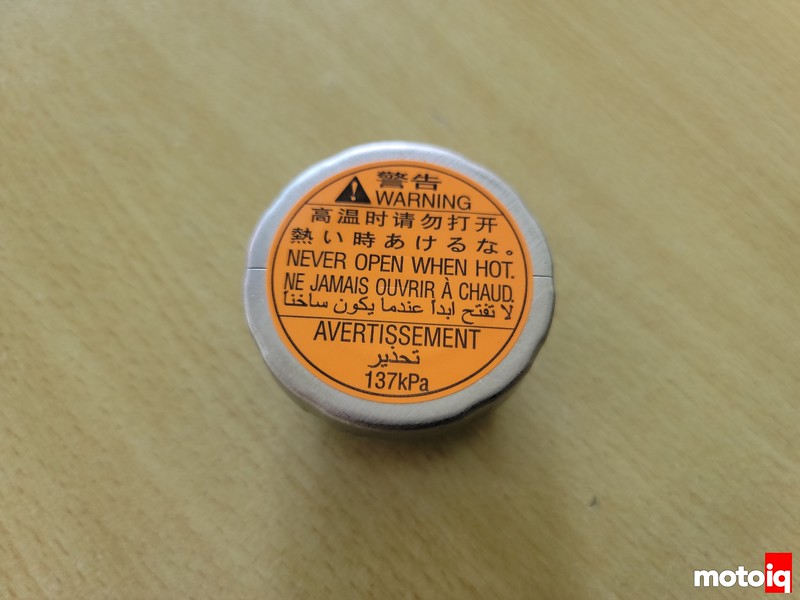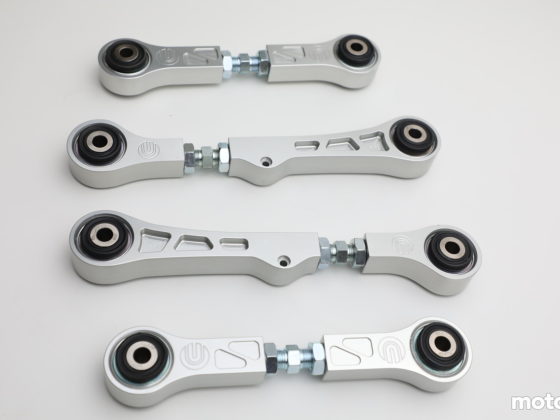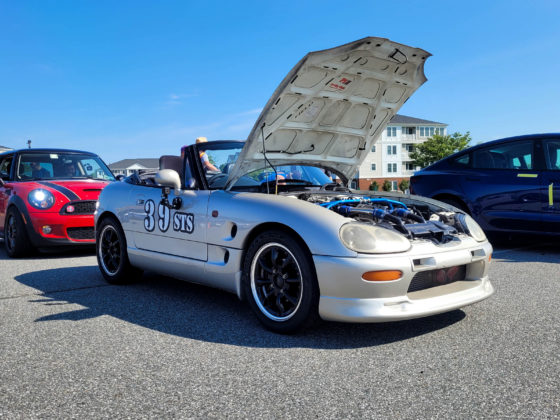
On a Subaru, the one-way cap on the radiator blows off when the coolant expands or boils and lets the excess coolant and air bubbles flow to the catch can. The expansion tank is the highest point on the cooling system and pulls coolant from the turbo, oil cooler, and crossover pipe passage in the block, returning it via the water pump, it also gathers and retains air bubbles from the engine block and heads. Since the expansion tank has a two-way cap it purges air bubbles and expanded coolant to the catch can. The expansion tank sucks up the expelled coolant from the catch can minus the air as things cool back down. Thus the radiator and the rest of the volume of the cooling system are always supplied with sold deaerated coolant. If the engine is running hot like in track driving and the coolant has some boiling, the bubbles from the engine and in the radiator are continually purged out of the system this way. By putting a two-way valve on the radiator, there is a chance that the bubbles can accumulate in the radiator and even in the engine as they will not be as effectively continuously removed from the cooling system. Overheating could occur in severe conditions because of this. So the proper thing to do is to use the round earless OEM one-way check valve cap on the radiator.

Then move the high-pressure two-way cap that came with your radiator to the expansion tank. This is an IAG expansion tank that makes room for big plenum intake manifolds but the same rules apply to the OEM tank mounted on the stock manifold. Now air will be getting purged out to the cooling system as intended.
After a few days of driving to let any air get purged out of the system, we went for an extended test drive in no-traffic conditions, bumper-to-bumper traffic, city driving, and extended idling hot soak. Well, we will be damned if the car now runs cooler, presumably because the one-way cap on the radiator burps all of the air out of the engine and radiator, sending it out into the catch can and letting the expansion tank replenish the system from the catch can. The radiator and expansion tank were brim full with coolant when we inspected them when the engine cooled down with no air gaps on top of the coolant. Before the car would run up to 203 degrees in bumper-to-bumper traffic or when doing a hot idle heat soak. Now the engine would be hard to get over 200 degrees and it would quickly recover. At highway speed, the temperature was averaging around the low 18o a bit of improvement. Considering that the thermostat doesn’t open fully till 194 degrees, this is pretty good. With hard-track driving, we would expect to see a bigger difference now that the system is purging air properly. So the moral of this story is, to put the stock earless cap on the radiator and your high-pressure aftermarket cap on the expansion tank! Spread the word.




28 comments
I remember commenting on it either on here or IG. I hope it was me! hahaha
It was you!
“Cool”, I’m going to brag to my friends. “Rad” article lol. Glad to have helped and thanks for the shout-out!
Thanks for pointing it out or I never would have looked into it!
Very interesting! I am sure this would get overlooked many times, by many people.
Oh! I had kept the round cap on my rad but I never knew that it was one-way, neat.
Thanks for sharing. I’m upgrading my radiator soon and now I know to keep that cap.
I spent 5 years as a certified Subaru tech and this was never explained to me. We were told not to mix them up but never given a reasoning. I even remember an instructor shrugging his shoulders in class when someone asked why!
Huh, the EJ uses that upper coolant reservoir as a degas bottle. Interesting.
Yeah, it’s like a swirl pot.
OMG, I’ve been struggling with air stuck in my cooling system (gurgling noise when I accelerate and no head gasket failure symptoms). I was having to repeatedly burp the system every couple weeks. After reading this article, I immediately went to my ’04 WRX and saw that I had the same two “eared” radiator caps on both the expansion tank and radiator. I just bought a round cap and am crossing my fingers that this’ll stop the entrapped air bubble issues that I’ve been dealing with.
Thanks for spreading the good word!
I wonder how many head gasket failures are a result of this.
Took the words right out of my mouth.
Oh that’s crazy Flatirons Tuning did a video on this a while back.
https://youtu.be/HzjBJz1Zdmw
I was seriously wondering about those caps the other day during a junkyard run. This is really timely advice!
Is this EJ specific?
2015 Forester with FA20DIT came with a two-eared cap from the factory.
Does it have the check valve in it?
I don’t know. My forester is in the body shop or I would have checked.
My point is, the caps shape isn’t an indication of whether it is correct for the application as the statement “The problem is that the OEM radiator cap is a round one with no ears and we found that it’s important for this cap to be on the radiator” suggests.
A round cap is not OEM on a 2015 Forester XT with FA20DIT.
Reference https://parts.subaru.com/p/Subaru_2015_Forester-20L-CVT-XT-Touring-wEyeSight/Radiator-Cap-Radiator-Cap/49251972/45137AE003.html
From looking at images of the 2015 Forester engine compartment, it appears not to have a high-mounted pressurized surge/deaeration tank like an EJ, the cap leads to a conventional overflow reservoir so it doesn’t have this sort of cap.
That’s why I asked if this article was specific to the EJ. That much wasn’t clear in the article.
So the information here isn’t applicable to 15+ WRX and 15-18 FXT and owners of these shouldn’t go searching for round radiator caps.
I did an edit to address your concern. Thank you for pointing that out.
Mike,
The stock round cap should be a higher pressure than the expansion tank. At a lower pressure it is opening before the expansion. Which isn’t functioning as designed.
The OE round cap is on the stock plastic radiator as a fill port and failsafe if the expansion cap stops working. Failsafe will avoid plastic end tanks exploding.
We switch to a solid cap on aluminum radiators, this allows the system to pressurize to the desired expansion tank cap pressure instead of maxing out at 137kPa of the stock 1 way round cap.
Glad you’re spreading the word as this is commonly ignored.
So I’m sorry I am so confused I have a 2002 Subaru Forester l so what cap do I put on because I just took off the one with the Chinese writing and I just put on another round one which they said AutoZone said that this is the one to you so which one is the correct one
I wouldn’t take advice from an AutoZone employee. I wouldn’t use Chinese parts either. Get the right parts from Subaru or Flatirons.
More worries on my 2006 sti
One other thing I’ve observed, if the OEM Cap is not fully seated, oriented (warning triangle symbol) pointed exactly towards windshield, the pressure in the system will not activate the “check valve” properly in the cap and the result is coolant blowback thru the expansion hose where it passively(no clamps) T’s back to the radiator and overflow tank. The system will actually force coolant out of the passively connected T connection. It sometimes gives the appearance the radiator is leaking between the upper/lower radiator tanks. Something to be aware of. The coolant “leakage” happens mostly during the cool down process btw. The cap is on tight enough to hold system pressure but not oriented to the point where the valve functions properly. hopefully this makes sense.
I’m confused so what you are saying in the article just so I get this right.. the 137psi round goes on the Expansion Tank? And the eared 108psi on the radiator… sooo in other words swap them around.. is that correct..
I other articles it says don’t do this!!! And on the subaru.org suggest use 108psi eared on both tanks… that’s three different opinions… now I’m really confused!!!!!!
Our way is correct of course. Although we don’t use 137 psi and 108 psi caps.